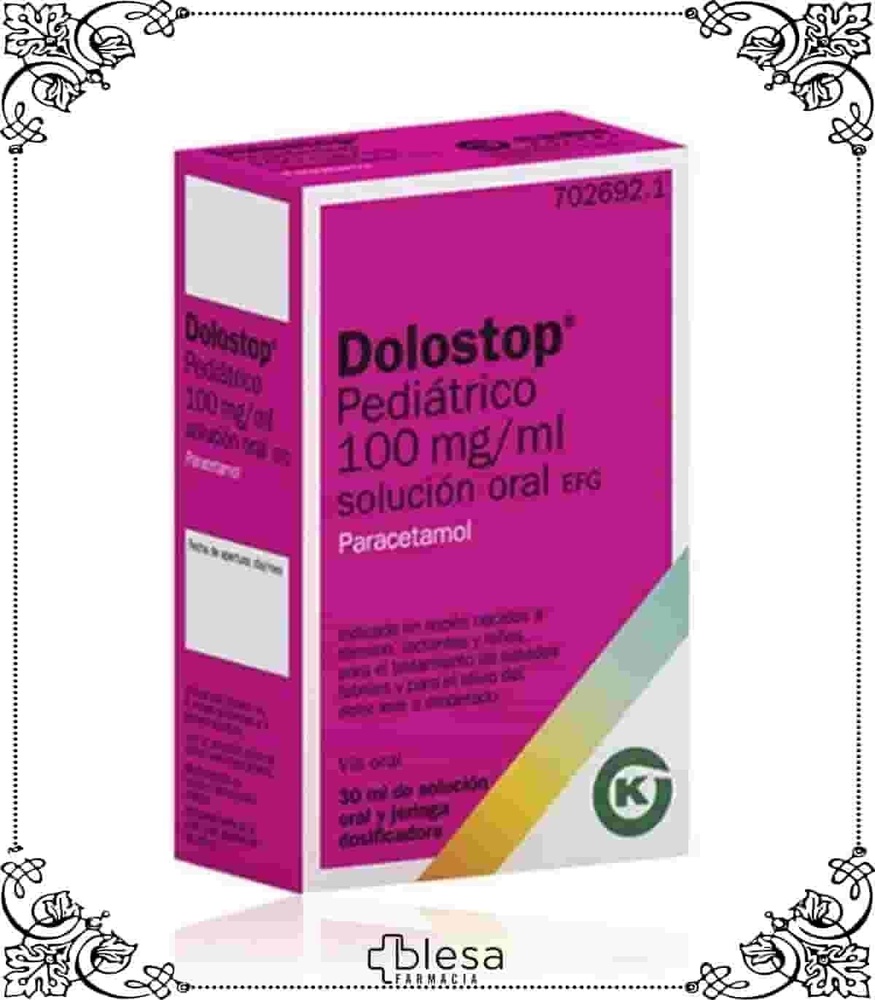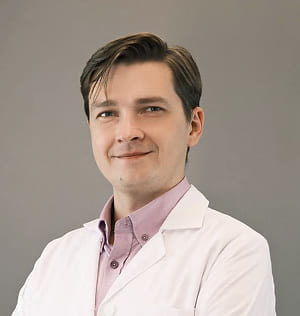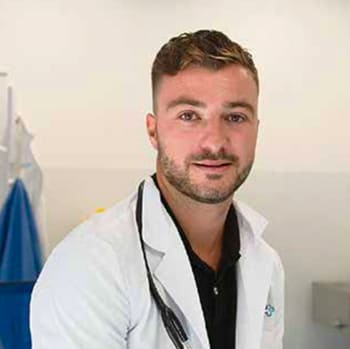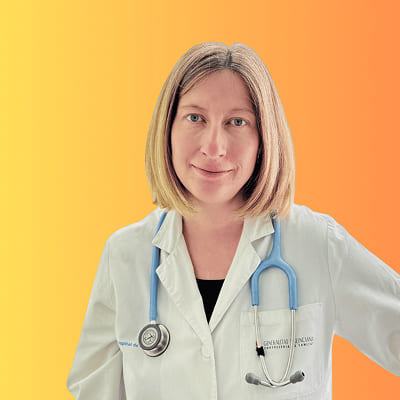

DOLOSTOP PEDIATRIC 100 mg/mL ORAL SOLUTION

Ask a doctor about a prescription for DOLOSTOP PEDIATRIC 100 mg/mL ORAL SOLUTION

How to use DOLOSTOP PEDIATRIC 100 mg/mL ORAL SOLUTION
Introduction
Package Leaflet: Information for the User
DolostopPediatric 100 mg/ml Oral Solution
Paracetamol
Read the entire package leaflet carefully before starting to take this medication, as it contains important information for you.
Follow the administration instructions for the medication contained in this package leaflet or as indicated by your doctor, pharmacist, or nurse.
- Keep this package leaflet, as you may need to read it again.
- If you need advice or more information, consult your pharmacist.
- If you experience side effects, consult your doctor, pharmacist, or nurse, even if they are side effects not listed in this package leaflet. See section 4.
- You should consult a doctor if your symptoms worsen or do not improve after 3 days. If the fever persists for more than 3 days or the pain for more than 3 days in children (2 days for throat pain).
Contents of the Package Leaflet:
- What Dolostop Pediatric is and what it is used for
- What you need to know before taking Dolostop Pediatric
- How to take Dolostop Pediatric
- Possible side effects
- Storage of Dolostop Pediatric
- Package Contents and Additional Information
1. What Dolostop Pediatric is and what it is used for
Paracetamol belongs to a group of medications called analgesics and antipyretics.
This medication is indicated for newborns, infants, and children for the treatment of febrile states and for the relief of mild or moderate pain.
2. What you need to know before taking Dolostop Pediatric
Do not takeDolostopPediatric
- If you are allergic (hypersensitive) to paracetamol or any of the other components of this medication (listed in section 6).
- If you have a severe liver disease.
Warnings and Precautions
Consult your doctor or pharmacist before starting to take this medication.
- Do not exceed the recommended dose in section 3. To do this, check that no other medications containing paracetamol are administered simultaneously.
- Patient with mild or moderate liver disease should consult with their doctor before taking the medication.
- Patient with kidney, heart, or lung disease, with anemia (decrease in hemoglobin level in the blood, due to or not due to a decrease in red blood cells), and in patients with chronic malnutrition or dehydration should consult with their doctor before taking the medication.
- Consumption of alcoholic beverages can cause paracetamol to produce liver damage.
- If the pain persists for more than 3 days (2 days for throat pain) or the fever for more than 3 days, or worsens or other symptoms appear, treatment should be discontinued and a doctor consulted. Avoid prolonged treatments.
During treatment with Dolostop, inform your doctor immediately if:
If you have severe diseases, such as severe renal failure or sepsis (when bacteria and their toxins circulate in the blood, causing damage to organs), or if you have malnutrition, chronic alcoholism, or are also taking flucloxacillin (an antibiotic). A severe disease called metabolic acidosis (an anomaly in blood and fluids) has been reported in patients in these situations when paracetamol is used at regular doses for a prolonged period or when paracetamol is taken with flucloxacillin. The symptoms of metabolic acidosis may include: severe breathing difficulties with deep and rapid breathing, drowsiness, feeling of discomfort (nausea) and vomiting.
Children
You should consult a doctor before administering this medication to children under 2 years of age.
Use ofDolostopPediatric with other medications
Inform your doctor or pharmacist that you are using or have recently used or may need to use any other medication.
Donotusewithothermedicationstotreatpainorfever(analgesics/antipyretics)unlessyourdoctortellsyoutodoso.
Paracetamol may increase the toxicity of chloramphenicol.
Barbiturates may potentiate the toxicity of paracetamol.
In case of treatment with oral anticoagulants, it can be administered occasionally as the analgesic of choice.
In particular, if you are using medications that contain any of the following active ingredients, it may be necessary to modify the dose or interrupt treatment of any of them:
- Oral anticoagulants (acenocoumarol, warfarin).
- Anticonvulsants (lamotrigine, phenytoin, phenobarbital, methylphenobarbital, primidone).
- Antituberculars (isoniazid, rifampicin).
- Colestyramine (used to decrease blood cholesterol levels).
- Medications used to treat gout (anti-gout) (probenecid).
- Some medications used to increase urine elimination (diuretics such as furosemide).
- Metoclopramide and domperidone (used to prevent nausea and vomiting).
- Propranolol used in the treatment of high blood pressure (hypertension) and heart rhythm disorders (cardiac arrhythmias).
- Flucloxacillin (antibiotic), due to a serious risk of alteration of blood and fluids (called metabolic acidosis with high anion imbalance) that should be treated urgently (see section 2).
Interference with analytical tests:
If you are going to have any analytical tests (including blood tests, urine tests, skin tests that use allergens, etc.), inform your doctor that you are taking this medication, as it may alter the results of these tests.
Use ofDolostopPediatric with food, beverages, and alcohol
This medication can be taken with or without food and administered directly or diluted with water, milk, or fruit juice.
The use of paracetamol in patients who habitually consume alcohol (three or more alcoholic beverages per day) may damage the liver.
Pregnancy, breastfeeding, and fertility
If you are pregnant or breastfeeding, or think you may be pregnant or plan to become pregnant, consult your doctor or pharmacist before using this medication.
Oral use of paracetamol does not produce undesirable effects in the pregnant woman, the fetus, or the newborn. Reproduction studies do not show malformations or toxic effects. If necessary, paracetamol can be used during pregnancy. You should use the lowest possible dose that reduces pain or fever and use it for the shortest possible time. Contact your doctor if the pain or fever does not decrease or if you need to take the medication more frequently.
Paracetamol passes into breast milk, although no communications of adverse effects in children have been reported. Therefore, it can be used in breastfeeding women if the recommended dose is not exceeded. Caution should be exercised in case of prolonged use.
Driving and using machines
It may decrease the ability to drive or operate machinery, as it contains propylene glycol, which can produce symptoms similar to those of alcohol.
DolostopPediatriccontains propylene glycol (E-1520)and glucose
This medication contains 2.72 mg of propylene glycol per ml.
If the baby is less than 4 weeks old, consult your doctor or pharmacist, especially if the baby has been administered other medications containing propylene glycol or alcohol.
This medication contains glucose. If your doctor has told you that you have an intolerance to certain sugars, consult with them before taking this medication.
3. How to take Dolostop Pediatric
Follow the administration instructions for the medication contained in this package leaflet or as indicated by your doctor, pharmacist, or nurse. In case of doubts, ask your doctor or pharmacist.
Remember to take your medication.
Your doctor will indicate the duration of the treatment. Do not suspend the treatment before, as the expected results will not be obtained. Similarly, do not use this medication for longer than indicated by your doctor.
The dosage of the solution is performed in ml (100 mg/ml), using the oral syringe of 2 or 5 ml.
Use in children
The dose in children under 2 years of age should always be established by their doctor.
Children from 0 to 10 years:
The recommended daily dose of paracetamol is 60 mg/kg/day, i.e., 10 mg/kg every 4 hours (up to 6 doses/day) or 15 mg/kg every 6 hours (up to 4 doses in 24 hours). In children under 1 year, doses of 10 mg/kg are preferred.
For the administration of 10 mg/kgwith a minimum interval of 4 hours, the recommended schedule is as follows:
Child's weight | Age (approximate) | Volume/dose in ml | amount of paracetamol/dose in mg |
3 - 4 kg | from 0 to 3 months | 0.4ml | 40 mg |
4 to 8 kg | from 4 to 11 months | 0.4-0.8ml | 40-80 mg |
8 to 10 kg | from 12 to 23 months | 0.8-1 ml | 80-100 mg |
10 to 15 kg | from 2 to 3 years | 1-1.5ml | 100-150 mg |
15 to 20 kg | from 4 to 5 years | 1.5-2.0ml | 150-200 mg |
20 to 25 kg | from 6 to 8 years | 2.0-2.5ml | 200-250 mg |
25 to 32 kg | from 9 to 10 years | 2.5-3.2ml | 250-320 mg |
For a direct calculation, the child's weight in kg can also be multiplied by 0.10. The result is the ml of solution to be administered.
These doses can be repeated every 4 hours.
Alternatively, doses of 15 mg/kgcan be administered with a minimum interval of 6 hours. In this case, for a direct calculation, the child's weight in kg can be multiplied by 0.15. The result is the ml of solution to be administered.
Administration of the preparation is subject to the appearance of painful or febrile symptoms. As these symptoms disappear, this medication should be discontinued.
If you estimate that the action of this medication is too strong or too weak, inform your doctor or pharmacist.
Method of use and route of administration
Oral route
Instructions for use:
1. Open the bottle by following the instructions on the cap (when opening for the first time, the seal will break).
2. Insert the oral syringe into the hole in the cap.
3. Invert the bottle and withdraw the necessary dose.
4. Administer directly or dilute with water, milk, or fruit juice.
5. The oral syringe should be washed with water after each dose.
Close the bottle well after each administration.
If you take moreDolostopPediatricthan you should
In case of overdose or accidental ingestion, consult your doctor or pharmacist immediately or call the Toxicology Information Service, phone 91 562 04 20, indicating the medication and the amount ingested.
If you have ingested an overdose, you should go quickly to a Medical Center, even if there are no symptoms, since often very serious symptoms do not manifest until 3 days after ingestion of the overdose, even in cases of severe poisoning. The symptoms of overdose may be: dizziness, vomiting, loss of appetite, yellowing of the skin and eyes (jaundice), and abdominal pain.
Paracetamol overdose is considered to be the ingestion of a single dose of more than 6 g in adults and more than 100 mg/kg of body weight in children. Treatment of the overdose is more effective if started within 4 hours of ingestion of the medication.
In the case of a patient being treated with barbiturates or suffering from chronic alcoholism, they may be more susceptible to a paracetamol overdose.
If you forget to takeDolostopPediatric
Do not take a double dose to make up for forgotten doses.
In case you have forgotten a dose, take another as soon as possible and continue with the usual schedule. However, if the time of the next dose is very close, skip the forgotten dose and take the next dose at the usual time.
4. Possible side effects
Like all medications, paracetamol can produce side effects, although not everyone experiences them.
This medication can produce the following side effects:
- Rare (may affect up to 1 in 1,000 people): discomfort, increased liver transaminases, and low blood pressure.
- Very rare (may affect up to 1 in 10,000 people): severe skin reactions, liver alterations (such as jaundice), low blood sugar, blood alterations (thrombocytopenia, agranulocytosis, leucopenia, neutropenia, hemolytic anemia), cloudy urine, and kidney alterations.
- Frequency not known (cannot be estimated from available data): A serious disease that can make the blood more acidic (called metabolic acidosis) in patients with severe disease using paracetamol (see section 2).
Reporting of side effects
If you experience any type of side effect, consult your doctor or pharmacist, even if it is a side effect not listed in this package leaflet. You can also report them directly through the Spanish Medication Surveillance System for human use: www.notificaram.es. By reporting side effects, you can contribute to providing more information on the safety of this medication.
5. Storage of Dolostop Pediatric
Keep this medication out of sight and reach of children.
Store the bottle in the outer packaging to protect it from light.
Do not use this medication after the expiration date indicated on the packaging after "EXP". The expiration date is the last day of the month indicated.
Once opened, the contents of the bottle must be used within 6 months.
Medications should not be thrown away through the sewage system or in the trash. Deposit the packaging and medications you no longer need in the SIGRE collection point at your usual pharmacy. In case of doubt, ask your pharmacist how to dispose of the packaging and medications you no longer need. This way, you will help protect the environment.
6. Package Contents and Additional Information
Composition ofDolostopPediatric
- The active ingredient is paracetamol. Each ml of solution contains 100 mg of paracetamol.
- The other components (excipients) are: macrogol 600, glycerol (E-422), sucralose (E-955), flavor masker (contains propylene glycol (E-1520)), strawberry flavor (contains propylene glycol (E-1520)), carmine red (E-120) (contains glucose), and water.
Appearance of the product and package contents
Dolostop Pediatric 100 mg/ml Oral Solution is presented as a clear, red-colored solution with a characteristic strawberry flavor.
30 ml packaging:
Transparent plastic (PET) bottle with 30 ml of oral solution, with a plastic adapter (LDPE) to insert the dosing syringe and closed with a plastic cap (HDPE). A 2 ml plastic syringe is included.
60 ml packaging:
Transparent plastic (PET) bottle with 60 ml of oral solution. With a plastic adapter (LDPE) to insert the dosing syringe and closed with a plastic cap (HDPE). A 5 ml plastic syringe is included.
Marketing Authorization Holder and Manufacturer
Kern Pharma, S.L.
Venus, 72 - Pol. Ind. Colón II
08228 Terrassa - Barcelona
Spain
Date of the last revision of this package leaflet:February 2025
Detailed and updated information on this medication is available on the website of the Spanish Agency for Medicines and Health Products (AEMPS) http://www.aemps.gob.es/.
- Country of registration
- Active substance
- Prescription requiredNo
- Manufacturer
- This information is for reference only and does not constitute medical advice. Always consult a licensed doctor before taking any medication. Oladoctor is not responsible for medical decisions based on this content.
- Alternatives to DOLOSTOP PEDIATRIC 100 mg/mL ORAL SOLUTIONDosage form: TABLET, 1 gActive substance: paracetamolManufacturer: Uxa Farma S.A.Prescription requiredDosage form: TABLET, 1 gActive substance: paracetamolManufacturer: Laboratorios Cinfa S.A.Prescription not requiredDosage form: TABLET, 1 gActive substance: paracetamolManufacturer: Laboratorios Cinfa S.A.Prescription not required
Alternatives to DOLOSTOP PEDIATRIC 100 mg/mL ORAL SOLUTION in other countries
The best alternatives with the same active ingredient and therapeutic effect.
Alternative to DOLOSTOP PEDIATRIC 100 mg/mL ORAL SOLUTION in Poland
Alternative to DOLOSTOP PEDIATRIC 100 mg/mL ORAL SOLUTION in Ukraine
Online doctors for DOLOSTOP PEDIATRIC 100 mg/mL ORAL SOLUTION
Discuss dosage, side effects, interactions, contraindications, and prescription renewal for DOLOSTOP PEDIATRIC 100 mg/mL ORAL SOLUTION – subject to medical assessment and local rules.















